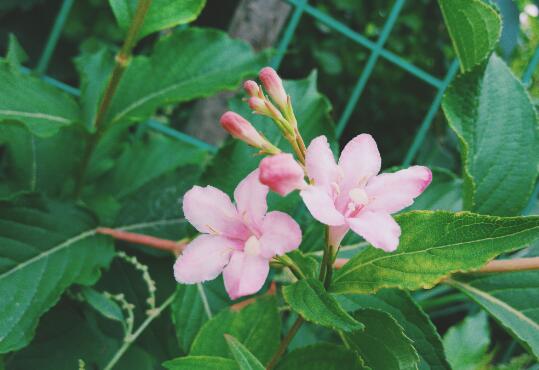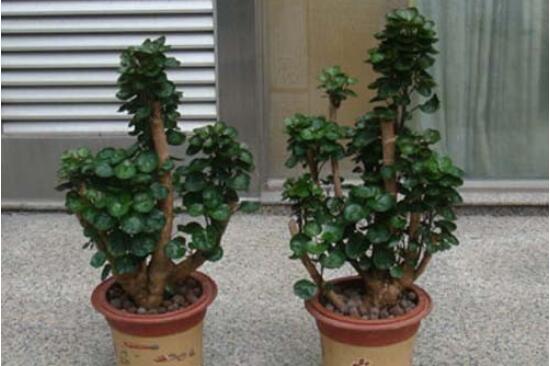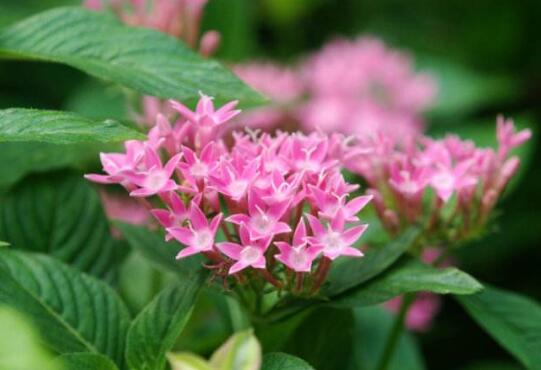How to reproduce the sea immortal, the method of propagation / sowing / cutting / ramet / striping
Sea immortal is a kind of flower plant with high ornamental value, which can be seen in many parts of our country. As more and more people breed it everywhere, people are concerned about its reproduction. What are the breeding methods of sea immortals? Next, the editor will take you to learn about it.
First, how to reproduce sea immortals, sowing / cutting / ramet / striping

When it comes to how to reproduce sea immortals, in fact, it is mainly divided into four methods: sowing reproduction, cutting propagation, split propagation and striping propagation. as long as we operate properly, the four propagation methods have a very high survival rate. as for the details of the four reproduction methods are introduced below, let's take a look.
Second, the propagation method of sea immortal.
Sowing and reproduction
Seed reminder: before we sow and propagate the sea immortal, there is a pre-treatment that needs to be done, and we need to urge its seeds. Generally, the seeds can be soaked in warm hot water for about 24 hours, and when the seeds begin to swell, they can be taken out and planted, so that the seeds can germinate more easily and more quickly.
Sowing method: when we sow sea immortals, we should first apply an appropriate amount of base fertilizer to the potted soil, then sow the seeds evenly on the soil surface, and after sowing, we can water them after covering the soil with 1-2cm. When watering, it is best to choose the soaking method, put the flowerpot into the water for 1/2, and let the water soak up slowly, because the seed volume of sea immortalis is small. It's easy to wash it away if you water it directly.
Cuttage propagation
Cuttings selection: the selection of cuttings also has a great impact on the survival rate of sea immortal cuttings. Generally speaking, it is better to choose branches with relatively robust growth and no diseases and insect pests as cuttings. If the branches we choose look very slender, then we can basically judge that the cuttage failed, so the selection of cuttings is a very important step.
Cutting method: when we carry on the cutting propagation to the mandarin duck jasmine, we can first use chopsticks to cut a hole in the basin soil, and then insert the cuttings into it, so that the operation can avoid the damage to the cuttings, which is very practical. After plugging in, we can start watering. When watering, we should pay attention to watering thoroughly.
Ramet propagation
The ramet propagation of sea immortals can generally be carried out in combination with changing pots. When we split the plants, we can lift the overgrown mother plants out of the basin soil, then cut them into several clumps, put them into pots separately, and plant them along with them. It is very easy to survive. Generally, it is a complete pot of foliage flowers.
Striping propagation
Among the propagation methods of sea immortals, striping propagation is a method that is less used. in striping propagation, we first need to bury the branches close to the soil into the soil, and then wait for them to grow roots and seedlings, we can put this branch stage, and then maintain the new roots on it, in fact, it is a relatively simple method of propagation.
The difference between sea immortal and brocade flower culture method
Sea immortals alias discolored flowers, flowers change with the light, such as colored pearls, colorful, dazzling. What's the difference between sea immortals and brocade flowers? How to breed it? Next, let's take a look at the difference between sea immortal and brocade flower and the breeding method of sea immortal.
I. the difference between sea immortal and brocade flower
The ornamental shrubs, which belong to the genus Ninjuriaceae, have similar overall plant types, so how to distinguish them? there is a simple saying to distinguish the two plants in garden arboretum: "half of the belt, sea immortal to the end", which refers to the connection below the middle of the calyx lobes, while the calyx lobes of the sea immortals are split to the bottom, which can quickly identify the two plants during the flowering period. In addition, the seeds of sea immortals have wings, and the seeds of Brocade have few wings, which can also be regarded as the key points for the identification of the two plants.
Sea immortal pictures
Pictures of brocade flowers
Second, the culture method of sea immortal.
1. Growth habits: sea immortal is a temperate tree species, which is cultivated everywhere, growing fast, strong sprouting power, light-loving, cold-resistant, slightly resistant to sprouting, lax requirements on soil discipline, and can endure barren. Grow better in the deep, fertile and moist upper layer, afraid of waterlogging.
2. Methods of reproduction
Sea immortal cuttings, sowing, striping and ramet can be used.
① cuttage: from May to September, select semi-lignified cuttings of sea immortal flowers, cut 15ml 20cm as cuttings, pour enough water after cutting and shade. It is as high as 40-50 cm in that year, and it is easier to survive with automatic spray with leaf cuttings. Select one-year-old mature branch cuttings in autumn, pay attention to form prevention in winter, close with plastic arch shed, the survival rate can reach more than 90%, and the group length can be 50 cm a year.
② sowing: sea immortal picking fruit in October, shade dry collection, sowing in the following spring, soaking seeds in cold water for 3 hours, pulling out and putting them in the bag, flushing water 3 times a day, heat preservation 6 Mel for 7 days, sowing, 1 cm of territory, covered with plastic pound film arch shed, seedlings coming out of the shed, gradually seeing light in the shed, strengthening fertilizer and water management, preventing cold in winter, transplanting seedlings in the second year, and flowering in 3 years.
③ striping: sea immortal can be carried out in the peak growing season, when the temperature is higher in June, it is easy to take root and can be separated from the mother plant in that year.
④ ramet: the sea immortal is excavated and transplanted when the bud is not sprouting in early spring.
3. Cultivation and management: sea immortals are easy to survive after transplanting with soil balls in early spring, fertilizing once a year before germination in early spring, and topdressing 2Mel 3 times in the growing season to promote growth. And cut off the old, weak and withered branches in early spring to ensure the formation of flower buds on 1-2-year-old branches. Pick out the inflorescence in time after flowering, so that the branches will blossom in 1-2 years in the coming year. A renewal pruning should be carried out in 2-3 years, and the branches of more than 3 years should be properly cut off to promote the growth of new branches.
The above is the difference between the sea immortal and the brocade flower and the sea immortal culture method is introduced, hope to be helpful to everyone, distinguish the sea immortal and brocade flower at the same time, better cultivate the sea immortal.
Recommended reading:
The difference between ① and Forsythia suspensa (Picture and text)
The difference between ② loose-tailed sunflower and Phoenix-tailed bamboo picture
The difference between ③ barracuda and barracuda the efficacy and function of barracuda
What is the difference between ④ tiger tail orchid and tiger skin orchid? what are the varieties of tiger tail orchid?
What is the difference between ⑤ Hypericum and Golden Plum (Picture and text)
The propagation of courtyard flowers in September 1. The species of woody flowers that can be sown are: peony, safflower oil-tea, Michelia, magnolia, magnolia, seven-leaf tree, summer wax plum, Canadian jujube and so on. Among them, the seeds of the seven-leaf tree can be sown in trenches, the hilum of the seeds should be facing down when sowing, the thickness of the covered soil should not be too deep, and it is appropriate to cover the soil with plastic film or straw to protect moisture. Chimonanthus seeds can be soaked in cold water for 24 to 36 hours before sowing, and the seedlings can emerge about 2 weeks after sowing. The above-mentioned seeds must be stored in wet sand except that Chimonanthus chinensis can be dried and sown in the following spring. September is a good time to sow grass flowers in autumn. feasible species of grass flowers include hollyhock, carnation, Gao Xuelun, dwarf snow wheel, pansy, goldfish grass, petunia, turnip, daisy, marigold, black chrysanthemum, iris, cherry and so on. In addition, greenhouse flowers such as cyclamen, primroses, golden lotus, melon and leaf chrysanthemum, four seasons begonia, Fulang flower, bao flower, can also be sown at this time, but to spend the winter in a plastic shed. 2. The species of flowers and trees that can be moisturized and propagated in the courtyard by using half sand and half chaff ash as cutting substrate are as follows: fire thorn, ten meritorious works, Michelia mollissima, leaf flower, sea immortal, peach leaf coral, hanging crabapple, Qionghua, snowball, brocade flower, mandarin duck jasmine, jasmine, pearl orchid, golden vein bed, coral flower, rubber tree, goose palm wood, Zhu banana and so on. Using general sand as seedbed, woody flowers that can be cut and propagated are: boxwood, purple magnolia, hypericum, Spiraea, pomegranate, hibiscus, crape myrtle, snow spray, eight immortal flowers, French holly, Phnom Penh privet, red leaf Berberis, bamboo, figs, oleander, June snow, gardenia, star anise plate, peony, peony and so on. Can also cut some grass flowers, such as a string of red, thousand red, marigold, sulfur chrysanthemum, cold chrysanthemum and so on. 3. Grafting can be carried out for the grafting and propagation of the following flowers and trees: peony with peony root as rootstock; peach, apricot and other seedlings as rootstocks to propagate elm leaf plum, green peach, Birthday Bun with Bean Paste Filling, red leaf peach, plum blossom, etc.; green maple seedlings as rootstocks, bagged wet branches to red maple, feather maple, etc.; Magnolia magnolia seedlings as rootstocks, bud grafting excellent varieties Magnolia, Erqiao Magnolia Potted purple magnolia as rootstock, white orchid; citrus seedlings as rootstock, kumquat buds, etc.; tassel as rootstock, sweet-scented osmanthus; potted wintersweet as rootstock, wintersweet plum as rootstock. 4. the ornamental flowers and trees that can be reproduced by striping are: Begonia, brocade flower, eight immortal flowers, gardenia, oleander, spring, golden bell, sweet-scented osmanthus, purple magnolia, jasmine, Michelia, camellia, pearl orchid, French holly, snowball, Qionghua, snow spray, Spiraea and so on. 5. The ornamental plant species with feasible ramets are: Chunlan, Cymbidium, Jianlan, peony, peony, Guangdong evergreen, purple Chrysanthemum, Chrysanthemum, tiger tail orchid, little angel, many green emperors, silver back silk grass, kidney fern, southern bamboo, begonia, purple magnolia, crabgrass, one leaf orchid, Ophiopogon japonicus and so on. In addition, hyacinths, tulips, freesia, calla lilies, Lycoris radiata and Mediterranean blue bell flowers can also be used to cultivate flowering bulbs at this time.
- Prev

How to propagate Fulutong, two propagation methods of Fulutong (cutting / striping)
Fu Lutong, also known as money pocket, its leaves such as belly pocket, evergreen all the year round, is a popular foliage plant recently. In life, many people keep a pot of flutong at home, but is it too monotonous? It's time to breed a few more pots, so how does Fulutong breed?
- Next

How to propagate the five-star flower, the method of propagation / sowing propagation / cutting propagation
Five-star flower is a common flower plant in people's life, which has high ornamental value and can be seen in many parts of our country. As more and more people breed in various places, the problems about its reproduction have also aroused people's concern about how to reproduce the five-star flower.
Related
- Fuxing push coffee new agricultural production and marketing class: lack of small-scale processing plants
- Jujube rice field leisure farm deep ploughing Yilan for five years to create a space for organic food and play
- Nongyu Farm-A trial of organic papaya for brave women with advanced technology
- Four points for attention in the prevention and control of diseases and insect pests of edible fungi
- How to add nutrient solution to Edible Fungi
- Is there any good way to control edible fungus mites?
- Open Inoculation Technology of Edible Fungi
- Is there any clever way to use fertilizer for edible fungus in winter?
- What agents are used to kill the pathogens of edible fungi in the mushroom shed?
- Rapid drying of Edible Fungi

